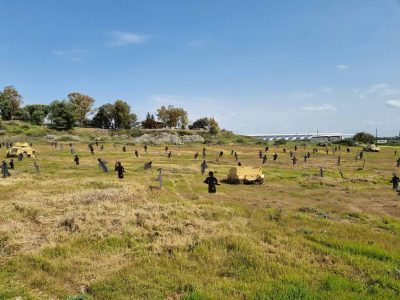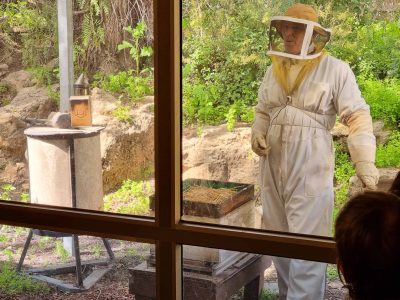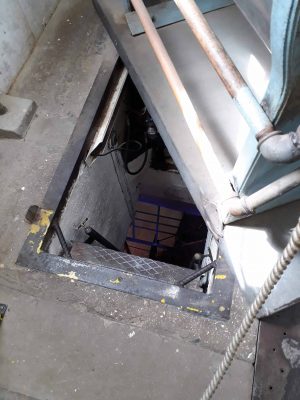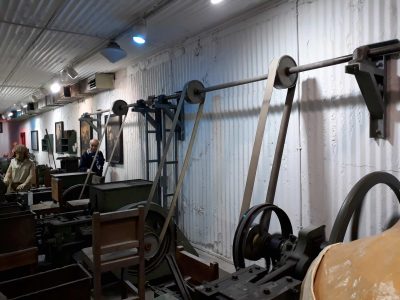×


We have detected your country as:
Please click here to go to the USA website or select another country from the dropdown list.
by: Janet Aslin, BFP Staff Writer
 This spring, Bridges for Peace volunteers had the opportunity to visit Yad Mordechai in southern Israel. I was excited to go because I had read the illustrious history of this particular kibbutz (collective community) during the 1948 War of Independence. For five days, the heroic men and women of Yad Mordechai held off an Egyptian force far superior in numbers and weapons. This gave the Israel Defense Forces (IDF) time to prepare and successfully halt the Egyptian drive a little farther north, before it reached the city of Tel Aviv.
This spring, Bridges for Peace volunteers had the opportunity to visit Yad Mordechai in southern Israel. I was excited to go because I had read the illustrious history of this particular kibbutz (collective community) during the 1948 War of Independence. For five days, the heroic men and women of Yad Mordechai held off an Egyptian force far superior in numbers and weapons. This gave the Israel Defense Forces (IDF) time to prepare and successfully halt the Egyptian drive a little farther north, before it reached the city of Tel Aviv.
I expected the tour to focus on the history of Yad Mordechai, but instead I came away from our visit most impressed by the presentation of Gadi, the beekeeper. His talk was fascinating as he illustrated just one component of the solid economic base of this modern, thriving community. It caused me to consider how the kibbutz model of communal living—so necessary at the beginning of the 20th century, when the Jews began returning to a desolate and often hostile land—is still relevant today.
 In the Beginning
In the Beginning In 1910, the land was still part of the Ottoman Turk Empire when a small group of young Jewish pioneers from Eastern Europe established Degania, Israel’s first kibbutz, between the southern shore of the Sea of Galilee and the Jordan River. What they began was a type of agricultural community that is unique to Israel and was instrumental in the foundational years of the modern state.
The word kibbutz means “gathering,” although initially the movement used the term kvutzah or “group” for these settlements. The young men and women who left their home countries and returned to their ancient homeland to form these groups or gatherings faced many difficulties. They were not farmers; the land itself presented challenges, such as the malarial swamps of the Hula Valley; and relationships with neighboring Arabs were challenging. Against all odds, the young pioneers persevered and began to restore the wilderness and wasteland (Isa. 35:1).
 Building the State of Israel
Building the State of IsraelContributions by the kibbutzim to the establishment of the modern State of Israel cannot be underestimated. During the years when the White Paper limited Jewish immigration to Palestine (1939–1948), many illegal immigrants managed to slip past the British with the help of kibbutzniks (members of a kibbutz) and were hidden on various kibbutzim until they could be integrated into Jewish society.
During the lead-up to the 1948 War of Independence, one of the most daring exploits took place under Kibbutz Hill near Rehovot. An ammunition factory roughly the size of a tennis court was built 25 feet (7.6 m.) under the kibbutz laundry, where 2.25 million bullets were produced before the war broke out. It was so secret that many kibbutz members were unaware of the factory, and it was 1973 before the story was told publicly.
There are many accounts of heroic actions that changed the course of the war, and there is not space in this article to do them justice. Although the approaching Syrian army managed to level the buildings of Degania, Jewish fighters had the last word as the Syrians were prevented from entering the Jordan Valley.
 Are Kibbutzim Still Relevant?
Are Kibbutzim Still Relevant?The number of Israelis who live on kibbutzim has never been high. In 1960, it was only 4% of the total population, dropping to 2.5% 50 years later. The challenges have been many, and at times it seemed as though this model of communal living was dying. The 1980s, for example, began a period of serious economic crisis for many of the nation’s kibbutzim that lasted for over 20 years. According to the Jerusalem Post, more than 50,000 members left during this time.
Yet by 2005, Amnon Rubinstein wrote in the Jerusalem Post, “After years of crisis, reduced productivity and departing members, kibbutzim have experienced a noticeable turnaround.” Rubinstein attributes the reversal to a drastic change in management. He writes, “The kibbutz’s downturn was caused by its inability to cope with globalization and free-market forces. The kibbutzim stubbornly adhered to their ideology of total uncompromised equality. Today’s revolution does not discard this traditional ideology. Instead, it differentiates between economics and management on the one hand, and the community on the other.”
Today there are over 270 kibbutzim in Israel. They range in size from as few as 100 members to over 1,000. Most have privatized their holdings, and members may work off the premises. They have adapted to a market-based economy in ways that don’t compromise their commitment to care for their weaker members. In some cases, members pay, on a sliding scale, a percentage of their salary to the kibbutz, which levels out the incomes.
We began with a peek at Yad Mordechai and its thriving economy. Tova, our tour guide, told the group that the kibbutz had constructed 40 new homes, which it was opening up to new members. They received over 300 applications, many of them from children of kibbutz members who had left for greener pastures and now were seeking to come home.
In the end, we can say that we have been created for relationships with others, and when they are missing, we are diminished. There is strength in community, and the kibbutz model, while certainly not the only way to achieve community, is like a big family in the truest sense of the word.
Photo Credit: Click on the Photo to See Photo Credit
All logos and trademarks in this site are property of their respective owner. All other materials are property of Bridges for Peace. Copyright © 2024.
Website Site Design by J-Town Internet Services Ltd. - Based in Jerusalem and Serving the World.